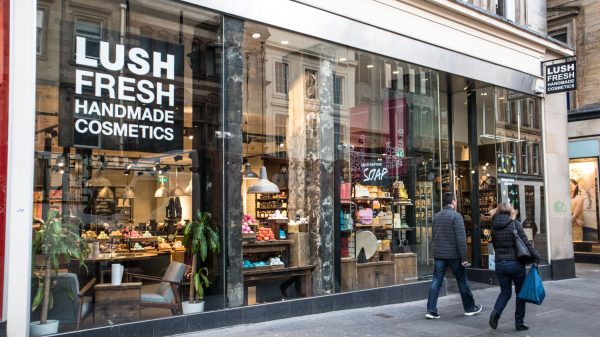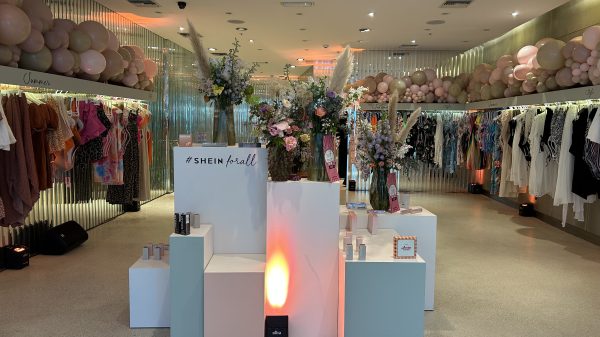Sportswear behemoth Nike began its switch to a more DTC model at the beginning of last year, following in the footsteps of rivals Adidas and Under Armour.
However, the move has encouraged criticism from experts, with MO Capital Markets analyst Simeon Siegel claiming that Nike’s DTC move is “not all it’s cracked up to be.”
He says that the advantages of more data, better product showcasing, and higher revenue could be offset by additional costs and recently told Business Insider that the retail space is moving into the “de-DTC era.”
However, huge brands are still continuing to ditch the wholesale model in favour of selling direct to the consumer. While the shift towards a DTC model has been more recently typified by sportswear brands, the entire retail industry may soon be taking more notice as margins continue to grow.
Which companies have moved to DTC and is it working for them?
Levi’s
Since launching in 1853, Levi’s denim has become a staple, both on the high street and in consumer’s wardrobes. But up until 2019, the company had traditionally used a more of a wholesale model as part of its retail strategy. At that point, the company’s CEO Chip Bergh said that wholesale had declined to 30% of the business, down from approximately 50% eight years prior.
By the end of fiscal year 2020, Levi’s DTC model had doubled to account for nearly 40% of its business (up from 20% in 2011), according to a filing with the SEC.
A recent shift in executive leadership at the brand has come as part of a wider move to increase DTC at the business. It is now aiming for DTC to account for about 60% of the business in the next ten years, according to Retail Dive.
Levi’s will also increase its physical store presence as part of the move, which is good news for the high street.
“As store productivity levels continue to recover, we are confident in the outlook of our DTC business and we will continue to invest in growing all segments of this channel,” Bergh told Seeking Alpha. “We also remain focused on diversifying our business.”
Nike
Nike is undoubtedly one of the biggest brands to adopt a more DTC-reliant strategy, with latest figures showing that DTC accounts for nearly 40% of the business.
The sportswear giant expects DTC sales to reach 60% by 2025, while at the same time operating 50% digitally, both through its own channels and its remaining wholesale partners. This figure is 35% up from the end of the most recent fiscal year.
In order to achieve this goal, Nike has attempted to cut down on its wholesale partners that don’t offer a differentiated experience or present its products the way it wants.

This has meant that Urban Outfitters, DSW, Macy’s, Zappos and Dillard’s have all been dropped by the sportswear brand.
“Nike’s definitely changing things more in the sense that they’re taking more aggressive steps to overhaul their wholesale distribution,” Kelsey Advisory Group senior equity analyst Cristina Fernández told Retail Dive.
“So you’ve seen them, and we’ll see them over this next 12 months, eliminate a lot of wholesale partners… that they felt like weren’t as closely aligned with their long-term model.”
On paper, the DTC model is working for Nike, which recorded almost $14 billion more in revenue than rival Adidas in 2020.
However, Revolution Beauty CEO Adam Minto told Charged that his brand is going in the opposite direction.
“It’s interesting Nike is doing that and they’re retreating from other distribution, but we’re kind of going the other way because there’s so much more physical space distribution we can go and we know that’s where beauty is shopped,” he said.
“We’re feeling confident about our model. It’s really exciting.”
Adidas
Nike’s main rival announced a plan to reach a 50% DTC business by 2025. In 2019, 30% of the business was DTC, before it increased that figure by 10% the following year.
The company is hedging its bets on ecommerce after the peaks of the pandemic and hopes to increase its digital sales to between $9 billion and $9.6 billion.
Adidas’ CEO Kasper Rorsted announced in March that DTC would be the backbone of the company’s net sales growth over the next four years, accounting for 80%.
It will follow a similar strategy to Nike, according to Rorsted, who said that it would hold onto certain strategic wholesale partners.
Adidas chief financial officer Harm Ohlmeyer laid out both the positives and negatives of the switch by saying: “Moving from a largely wholesale-driven to a DTC-led business model is a tremendous opportunity from a strategic and from a financial perspective.
“But it also means that an increasing share of sales is realised by shipping individual parcels to consumers instead of large bulks of products to wholesale partners.
“Individual product returns need to be handled, omnichannel offerings are becoming more important. All of this increases the complexity in our supply chain and we hold onto inventory longer. T
“That said, we have a clear understanding of all of those moving parts and have a proven ability to mitigate them.”
Under Armour
Athletics brand Under Armour has also shifted towards a more DTC-centric model, announcing that it would exit up to 3,000 wholesale doors.
This was part of a two-to-three strategy that was set in the second half of 2021.

In Q4 of 2020, Under Armour’s DTC grew 11% thanks to a 25% rise in ecommerce thanks to the pandemic.
Since then, the company’s CEO Patrik Frisk claimed the company had seen a “significant increase in DTC” and “considerably lower” wholesale sales.
Frisk admitted both channels were up greatly over 2020 however, with wholesale growing 157% and DTC increasing 52%.
“Athletic brands are stronger and they’re more recognised,” Fernández told Retail Dive. “As a result, moving to DTC is “a little bit easier for them.”
Crocs
Footwear label Crocs has always traditionally leant more heavily on its wholesale suppliers. However in recent years it has shown indications of turning its back on the model.
In 2020, wholesale made up 50% of the company’s revenue, while its own website and bricks-and-mortar stores made up the other half.
The company is looking to make digital sales account for up to half its revenue by 2026.
Despite cosmetic brand Revolution Beauty not fully embracing the idea of DTC, Minto did praise its ability to provide valuable customer data.
“The reason why DTC is important is because it actually gives us real data; clean information about what our consumer is loving,” he said. “We can tell we’ve got product success in minutes.”
“We can also tell whether we’re capturing a new customer or an existing customer,” Minto added. “Then we can refine the product range and put it into our retail partners with confidence. It’s a seamless process.”
There is a real chance that DTC could become a more prominent model in particular sectors of the retail space, but for now, fashion brands are clearly leading the way.










